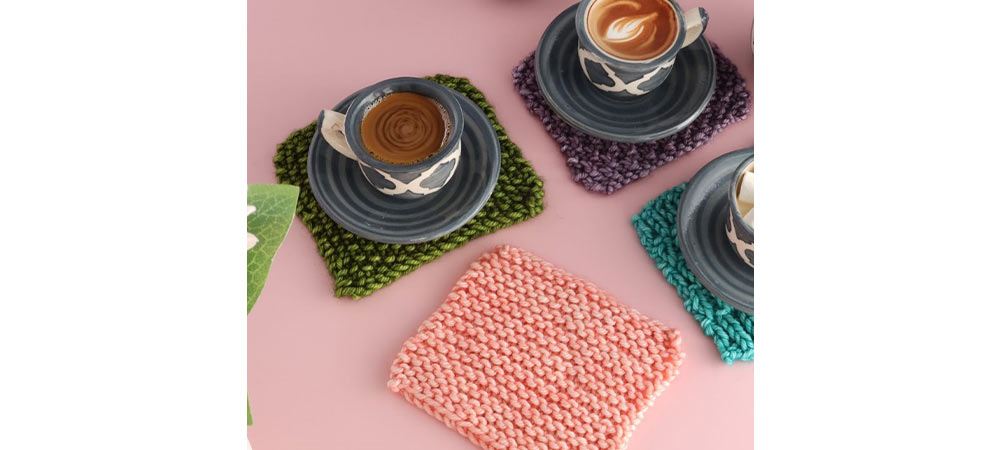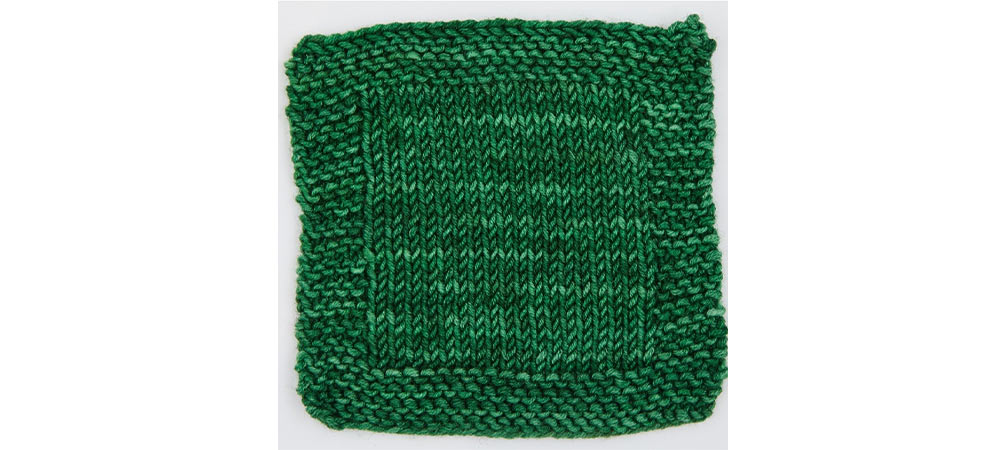Learn the Essentials: Basic Stitches Every Knitter Should Know
- Symfonie Yarns
- 30Nov, 2024

Knitting is a beautiful rhythm of knitting needles and yarn to create a fabric. The classic art of knitting provides a sense of accomplishment and relaxation. Understanding the fundamental stitches is crucial for any knitter, especially when they are stepping into the craft. The basic stitches that every knitter should recognize will be covered in this blog, giving you the groundwork to make stunning creations using Symfonie’s curation collection of hand-dyed yarns.
Understanding the basic stitches in knitting
Knitting is based on two stitches - knit and purl, every other stitch pattern is just a combination of them. Knit and purl are like two sides of the coin as you may look at it. The knit stitch is the first stitch you learn with a pair of single-pointed knitting needles or a circular needle to knit a flat pattern (back-and-forth: row by row). Once you cast on stitches; make loops of yarn on the knitting needle, you work on the loops to create a fabric. The knit stitch instructs you to insert the needle tip in the back of the loop and bring the yarn from front to back. And, the purl stitch is the exact opposite. Knit stitches make a V appearance while purl stitches make a U or bumpy appearance. Once you master the knit and purl stitch you can confidently tackle a variety of patterns and designs.
Let’s understand Knitting Yarn
You can use any yarn for a knitting pattern or project. However, it’s important to understand yarn. Our previous guide on getting familiar with yarns will walk you through. Explore the range of Symfonie Yarns for hand-dyed semisolid and variegated shades. To get started you can choose Bella Yarn for a beginner-friendly project. The worsted weight yarn in extrafine merino wool is a good starting point. It is a machine-washable which makes care manageable. Viva Yarn is a range of DK-weight yarn, one of the most common yarn weights. Terra is a fingering weight yarn in a merino-polyamide blend that works for socks and other projects that require elasticity. Luna’s merino-silk yarn is a better fit for lacework and delicate knits.
When choosing yarn for your knitting projects, think about using hand-dyed yarn, which gives your work depth and distinctive color variations. The most exquisite hand-dyed yarns frequently have vibrant shades that can elevate even the most basic designs into breathtaking works of art. In addition to being smooth, Merino wool offers exceptional warmth without being bulky, making it perfect for clothing or accessories.
Now, back to the stitch patterns that every knitter should become proficient in:
1. GARTER STITCH
The garter stitch is the most basic knitting stitch and a great stitch for new knitters to start. A soft, textured fabric that lies flat and doesn't curl at the edges is produced by knitting each row.
Steps to follow:
- Cast on as many stitches as you choose for knitting the garter stitches.
- Knit each row, until your item reaches the desired length.

Uses: The garter stitch is ideal for scarves, blankets, and simple items. It looks stunning with the best hand-dyed yarn, bringing out the vivid hues without being overpowering. You can read our blog on 10 easy knitting projects for beginners.
2. STOCKINETTE STITCH
The Stockinette stitches involve knitting one row and purl the other one. It creates a smooth ‘V’ texture on one side and a bumpy on the other. It looks great due to its classic look and feel. The stitches are ideal for hats, scarves, blankets, and more. It curls at the end therefore it needs a border and is perfect for showcasing the intricate patterns.

Stockinette stitch (Middle part of the swatch)
3. SEED STITCH
The seed stitch adds texture and visual interest to your projects. It alternates between knit and purl stitches both within rows and between them.
How to Knit Seed Stitch:
- Cast on an odd number of stitches.
- Row 1: Knit 1, Purl 1; repeat from to end.
- Row 2: Purl 1, Knit 1; repeat from to end.
- Repeat these two rows.
Create various projects like baby blankets, textured cowls, and pillows with seed stitches. All you need is knitting needles and yarn for knitting.
4. RIB STITCH
Rib stitch is a textured knitting pattern, wherein you alternate knit and purl stitches in the same row. Pick up the most luxurious Merino wool and create interesting and unique patterns.
How to knit rib pattern
The most popular method is 1x1 Rib stitch.
- In this technique, alternate one knit row stitch with one purl across the row. The stitch creates stretchy fabric, ideal for socks, mittens, and gloves.

5. MOSS STITCH
Moss stitch is a classical and reversible knitting pattern, created by alternate knit, and purls every stitch and changes their location after every two rows. It produces a tiny basketweave pattern.
How to knit moss stitch
- Row 1 and Row 2: knit 1 and purl 1, across the row.
- Row 3 and Row 4: purl 1 and knit 1, across the row
You can easily create unique, textured designs like scarves, shawls, dishcloths, and blankets.
Mastering the fundamental stitches opens up a world of creative possibilities for knitters. Every method, from the elegance of seed stitch and ribbing to the simplicity of garter stitch, lends a unique character to your work. You can make lovely items with these fundamental stitches using high-quality materials like hand-dyed yarns from Symfonie.
As your knitting journey progresses, keep in mind that practice makes you perfect. Remember that every master was once a beginner, therefore embrace every error as a teaching moment! Now that you have mastered these fundamental abilities, you can enjoy the soothing craft of knitting while experimenting with increasingly intricate patterns and techniques.
-
- 04 Feb,2025
-
- 28 Jan,2025
-
- 24 Jan,2025
-
- 22 Jan,2025
-
- 18 Jan,2025
-
- 15 Jan,2025
Copyright © Symfonie Yarns 2025 - all rights reserved
